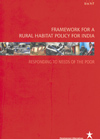
Publication Date: 2005
No. of pages: 118
Brief summary about document :
The project document was created by LIGHTS in 2005 funded by Building Social Housing Foundation, UK. This document tries to fill the knowledge gap in our understanding of participatory rural habitat process. In Indian context, rural houses are mostly constructed by the families and very small percentages of houses are financed by grant based government social housing schemes. But these schemes hardly managed to provide good and improved quality houses. On the other hand where NGOs have involved communities in their housing construction presents good houses to demonstrate. The latter, however, lacks the technological developments. Therefore, there is a need to learn and link the shortfalls of government housing schemes and the good practices of community managed projects. With this background, the document lays down a framework through which rural habitat interventions may be analyzed and the role of stakeholders contextually understood within the framework of the intervention, as well as the generic principle. It includes thirteen case studies on different housing schemes and projects. These case studies entail the good practices and analyses the features and systems that can be appropriate for the success of any housing initiative in terms of impact, sustainability and replicability.
Documentation assistance for : Building Social Housing Foundation, UK.

Publication Date: 2006
No. of pages: 34
Brief summary about document :
This document is a kind of follow up of the PARTICIPATORY RURAL HABITAT PROCESS: EMERGING TRENDS. The current document was again produced by LIGHTS in 2006 funded by Building Social Housing Foundation, UK. The publication is an attempt to develop the framework for a rural habitat policy that can affect habitat process at grassroots level. The existing policy i.e. the national habitat policy and in its implementation procedure there is a lot of disparity. Besides, India does not have a separate habitat policy that deals with the needs of rural areas. Therefore, the current document provides a schema for an effective rural habitat policy that could be instrumental in enhancing the overall quality of the Indian villages by adopting community based village development. The document briefly touches upon the rural habitat and the current state of affairs. It talks about the perspectives and goals of rural habitat policy followed by guiding principles and policy thrusts. Then it discusses the understanding of diverse stakeholders and their role in policy intervention. Finally the document concludes with a discussion on strategic imperatives for visible impact in the development of habitat in rural India.
Documentation assistance for : Building Social Housing Foundation, UK.
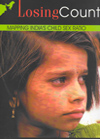
Publication Date: 2006
No. of pages: 76 - Dr. P. Nag
Brief summary about document :
The document is developed by LIGHTS and published by Population Foundation of India in 2006. Gender discrimination in India has very visible consequences on India’s population. The statistical data of Census of India, 2001 revealed a sharp decline in child sex ratio aged at 0-6 years. The Child Sex Ratio trend from the year 1981 to 2001 also clearly indicates a steady decline. This document is quite useful for those looking for statistical information on the Child Sex Ratio (aged group of 0-6 years) at sub district and district level of all the states of India. Besides, it also includes the comparative data on the Child Sex Ratio from 1991 to 2001.
Documentation assistance for : Population Foundation of India
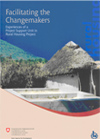
Publication Date: 2007
No. of pages: 32
Brief summary about document :
The document was designed and printed by LIGHTS for Holtec Consulting Private Limited funded by Swiss Agency for Development and Cooperation (SDC) in 2007. As per Census of India, 2001, estimates, there is a need of 15 million houses in rural areas. Contrary to the fact that country has witnessed the growth in housing sector (limited to urban areas and cities) the people in villages struggles to own a 200 sq. feet houses. Therefore SDC, New Delhi came up with a Rural Housing Project (RHP) in 2002 to enhance the access and gender sensitive choices pf houses for rural poor with the emphasis on the sustainable building materials and to strengthen the decentralization process. This project document begins with the historical perspective of SDC-Holtec collaboration. It then explains the selection process of partnerships in the three states of India i.e. Andhra Pradesh, Karnataka and Rajasthan. It was followed by the experiences of PSU in the areas of strategic support like, competency mapping, technology promotion and housing design, livelihood promotion, institutional finance, policy advocacy, decentralization, collaborations and networking and project management. Lastly, the document concludes with the e like, competency mapping, technology promotion and housing design, livelihood promotion, institutional finance, policy advocacy, decentralization, collaborations and networking and project management. Lastly, the document concludes with the experiences by PSU and lessons learned during the project.
Documentation assistance for : Swiss Agency for Development and Cooperation
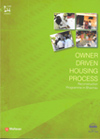
Publication Date: 2007
No. of pages: 26
Brief summary about document :
The document was developed and printed by LIGHTS for UNNATI, Ahmedabad in 2007. Most of the humanitarian agencies Post disaster rehabilitation and reconstruction programmes adopt for the quickset and most affective way to build houses by employing professionals. But in the process they tend to ignore the social and cultural needs of the communities. Besides, less importance is paid to the people’s participation, use of locally and easily available material and technology and users satisfaction. The document is based on the experience of UNNATI for facilitating the owner driven reconstruction in the Bhachau town of Kutch. The document briefly touches upon the Gujarat Earthquake, 2001 and the Gujarat State Disaster Management Authority’s (GSDMA) initiative to provide assistance for housing construction. Then it gives details about the damages occurred in the Bhachau town during the earthquake.
Documentation assistance for : UNNATI, Ahmedabad
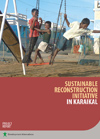
Publication Date: 2008
No. of pages: 70
Brief summary about document :
provided financial contribution to the Swiss Solidarity in partnership with Swiss Red Cross to rebuild and improve the physical habitat conditions and community infrastructure in three villages of Karaikal District of Puducherry. The first chapter of the document starts with the project background. The project was outcome of regional context and policy framework in response to Tsunami. The previously conducted feasibility studies during the relief phase provided a base to design the solutions. The project was a complete success as partnership and collaboration with locals helped in building shared commitments, complementary skills and local understanding. The second chapter deals with achievements of the projects initiatives. Three new settlements with proper infrastructure and amenities and houses through eco-friendly technologies had been constructed. Besides, the project has also contributed to the capacity building of the community to continue the development process. The third chapter of the document talks about the challenges posed by locale and the stakeholders. But projects positive frame and flexibility to adapt, change and respond to emerging needs of the community were key solutions to the challenges. The document ends with the chapter on lessons learned based on the projects experience. It gives valuable ideas for future reconstruction initiatives and processes with long term habitat development processes in a sustainable manner.
Documentation assistance for :
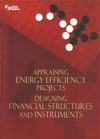
Publication Date: 2007
No. of pages: 135
Brief summary about document :
the manual is based on the project which was part of the World Bank’s Technical Assistance project titled ‘Development of Financial Intermediation Mechanisms for Energy Efficiency Investments in three developing countries’, namely Brazil. China and India. The manual provides blueprint to assist banks and financial institutions to appraise the energy efficiency projects. The manual presents the general framework for energy efficiency projects subjected to bank’s internal credit and financial strategies. The chapter of the manual introduces the concept of energy efficiency and its importance in Indian context by providing possible list of areas where EE projects could be implemented. Existing and proposed regulatory framework for energy efficiency projects in India has also been covered in the. The appraisal mechanisms for EE projects have been divided into the two parts. One part covers the detailed appraisal of the Promoter appraisal, Technical Appraisal, Financial Appraisal, Environment Appraisal and Legal Appraisal. The second part includes the bank’s financing procedure to an Energy Service Company Appraisal. Then it includes the Indian based case studies for the better understanding of the appraisal process involved in financing of such projects. In addition to this, the manual is also supplemented by various Appendixes related to appraisal of Energy Efficiency projects.
Documentation assistance for : Indian Renewable Energy Development Agency Limited
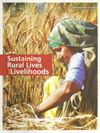
Publication Date: 2008
No. of pages: 72
Brief summary about document :
The document begins with India’s development planning specifically focused to meet the economic, ecologic and social sustainability and one of the most important aspect of this development plan is poverty reduction. To achieve this goal India’s National Environment Policy, 2006, emphasizes that land management, agriculture, water resources and rural development need to be perused in a manner that economic growth is not attained at the cost of environment. Against this backdrop the following chapters of the document give details of the India’s programmes and challenges in managing agriculture, land, desertification, drought and rural development.
Documentation assistance for : Ministry of Environment and Forest

Publication Date: 2009
No. of pages: 16
Brief summary about document :
The document details the Clean Ganga Mission which is an outcome of failure Ganga Action Plan (GAP). Seeing the degrading state of Ganga in 1985, Ganga Action Plan was launched with an objective to improve the water quality and to intercept, redirect and treat the water. Despite its limitations regarding the operation and maintenance issues GAP had mixed success. With the shortcomings of GAP a new holistic approach based on river basin as the unit of planning and institutional design was proposed for adoption. To realize this goal, the central government has constituted the ‘National Ganga River Basin Authority’ (NGRBA). The main objective of NGRBA is to ensure effective abatement of pollution and conservation of the Ganga River. It has both regulatory and development functions for effective abatement of pollution and conservation of the River Ganga.
Documentation assistance for : Ministry of Environment and Forests

Publication Date: 2006
No. of pages: 288
Brief summary about document :
The book consists of articles under five different aspects of water covering fresh water to ground water, rain water to river, wetlands and lake water and the articles of the last section deals with the rain water harvesting. The book is basically a compilation of articles published in the magazine Geography and You.
Documentation assistance for : IRIS Publication Pvt. Ltd.

Publication Date: 2006
No. of pages: 288
Brief summary about document :
Drylands in india comprise of about 228.3 million hectares , 96.5 percent of the total land area. The arid classification covers 50.8 million hectares, semi arid 123.4 million hecttares and dry sub humid about 54.1 million hectares. In arid and semi arid regions the temprature rises to 48 degree areas susceptible to water and wind erosion.
Documentation assistance for : IRIS Publication Pvt. Ltd.
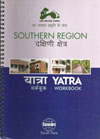
Publication Date: 2006
No. of pages: 76 - Dr. P. Nag
Brief summary about document :
Yatra workbook portraits the journey of the Lok Awas Yatra initiative taken by Development Alternatives that provides a platform to access sustainable rural housing, solutions information gathering and sharing. The key themes of the Yatra workbook consist of articles on good practices of sustainable housing solutions. The projects discussed in the three trails i.e. Tamil Nadu, Kerala and Andhara Pradesh mainly deals with the knowledge sharing of eco-friendly technologies and construction options available for the rural housing that leads to sustainable livelihood and development. At the end of each article workbook allows to note down the ideas on various issues of sustainable rural habitat.
Documentation assistance for : Development Alternatives
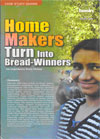
Publication Date: 2006
No. of pages: 6
Brief summary about document :
Disaster situations sometimes improve the pre-existing social conditions of the people and turns into an opportunity to make the less under-privileged groups less vulnerable. The brochures contains the case study entails the experience of from Orissa where housewives were empowered to earn the livelihood after Orissa Cyclone, 1999. After Orissa’s super cyclone in 2000, Orissa Development Technocrats Forum and later on Government of Orissa’s focused on the capacity building of unskilled laborers particularly women and trained them on masonry and construction skills to build disaster resistant, gender sensitive and eco-friendly house by using cost effective technologies. This ultimately enhanced the technical skills of both men and women and benefited them with higher income.
Documentation assistance for : Basin-South Asia
Publication Date: 2010
No. of pages: 124
Brief summary about document :
A handbook was distributed to the participants of the Data Users’ Seminar held on 25-27 July, 2010 at Dehradun, Uttarakhand. The handbook consists of session-wise information on the programme agenda and details of the topics discussed. It also includes feedback form to be filled by the participants for their views regarding the presentations made and topics discussed.
Documentation assistance for : IRIS Publication Pvt. Ltd.
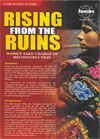
Publication Date: 2006
No. of pages: 6
Brief summary about document :
The devastating Gujarat Earthquake of 2001 has proved to be a turning point in the lives of many women. The experience of ANANDI revealed untrapped potential of women folk to face the challenges posed by the earthquake. The leaflet documents the case study of the post earthquake reconstruction and rehabilitation programmes of ANANDI in Maliya Block of Rajkot District to educate disseminate information on earthquake safe building practices. ANNADI’s main focus was on capacity building of women to various tools and techniques for design, implementation and management of reconstruction work. After receiving the training women carried out the entire construction work on their own. This case study exhibits the how trapping of potential local human resources can lead to effective implementation of reconstruction programmes.
Documentation assistance for : Basin-South Asia.
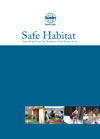
Publication Date: 2006
No. of pages:
Brief summary about document :
programmes conducted for school children and teachers. The ‘Earthquake Safety Initiative by Children’ programme was held in Latur, Maharashtra with a view to educate the adults on disaster mitigation through children, aware them about earthquake risk reduction and to influence the Education Department to include disaster mitigation in the school curriculum. ‘Children led Disaster Risk Reduction’ is a development sector programme through a children centric approach. The programme was initiated by Association of Rural and Tribal Development (ACTION) in collaboration with Save the Children (UK). The main agenda of this programme was to prepare the children for future disasters in the East Godavari District of Andhara Pradesh. The activities taken up by the programme was to encourage the children to identify risk in their schools and assist them in preparing safety plans. The programme also helped in building capacity to deal with disaster and capacitated the children to replicate the best practices at their school. ‘Children Develop Preparedness in Quake Prone Villages’ documents the project ‘Village Level Children Based Emergency Preparedness Planning and Response’ which was aimed at capacitating the village children of Rapar Block, Kachchh District, Gujarat, India. The project tried to build an understanding on how to minimize the disasters losses and also tried to inculcate a culture of disaster risk reduction among children. The project oriented the children on many aspects of earthquake preparedness and project design, group training sessions were organized on first aid, search and rescue, early warning communication and psycho-social care and trauma. Retrofitting of School Buildings briefs about the demonstration and training camp organized by National Centre for Peoples Action in Disaster Preparedness on behalf of Building Materials and Technology Council in thee year 2006 and 2007. The training camp retrofitted the five schools and provided valuable lessons on school building safety. Main aim of the programme was to display retrofitting in important buildings so that the urban population gets benefit from the replications. Students and Teachers Develop School Disaster Management Plans in Delhi, Gujarat and Nicobar Islands in India: Sustainable Environment and Ecological Development Society (SEEDS), India has pioneer a School Safety Initiative with an idea to reach parents and ultimately to the community through school students. The programme assisted the school students and teachers in developing school disaster management plan.
Documentation assistance for :
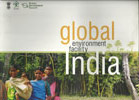
Publication Date: 2010
No. of pages: 124
Brief summary about document :
The docket contains the five briefs on Global Environment Facility and its four focal areas of concern. The main manual briefs on the Global Environmental Facility in India which is an independent financial mechanism established in 1991. GEF India provides grants to developing countries and economies in transition for the projects that benefit the global environment and promote sustainable development. The manual provides the mandate of the GEF projects and brief on the variety of projects that GEF funds depending on the project size. The new initiatives taken by GEF are resource allocation framework where resources are allocated in a transparent and consistent manner based on global environment priorities and country’s capacity, policies and practices. GEF has made arrangements for funds to support public-private partnership strategic programme. In the end manual briefs on the proposed framework that governs the GEF India and responsible for project identification, formulation, implementation and monitoring of GEF activities in India. The Ministry of Environment and forest is the nodal Ministry for the Conventions concerned with 4 focal areas of GEF namely: Sustainable Land Management, Eliminating Persistent Organic Pollutants, Conserving Biological Diversity and Climate Change.
Documentation for/assistance from:
Publication title: Sustainable Land Management Brief summary about document: The brief documents new area of concern for the GEF is land degradation as it is global environmental and development issue. The main goal of GEF is to arrest and reverse the land degradation through sustainable land management. GEF in 2003 elected as a financial mechanism of the UN Convention to combat desertification The brief provides India’s region-wise systematic priority needs for land degradation addressed in the 2nd National Five Year Plan. Then it provides tabular presentation specifying six sub projects under sustainable land and Ecosystem Management (SLEM), to promote sustainable land management and use of biodiversity.Brief summary about document:
distributed geographical and remain in the environment for the longer periods. India has signed the Stockholm Convention in May 2002, with the intention to reduce and eliminate the production and release of 12 hazardous substances known as “Dirty Zone”. The brief discusses the GEF’s priorities zones to reduce and eliminate the use and release of POPs and its contribution strategic programmes towards the capacity development for the management of the chemicals. It provides information on the India’s National Implementation Plan for POPs reduction and the status of banned POPs in India. At the end, key links are given.Brief summary about document:
The forth brief in the docket is on “Conserving Biological Diversity” and with the concern on biodiversity loss India has signed the Convention on Biological Diversity in June 1992 and ratified it in 1994. GEF offers global benefits for biodiversity related activities in its member countries by allocating resources under Resource Allocation framework (RAF). India is utilizing the RAF allocation in developing an umbrella programme as per national priorities. The brief contains information on GEFs Strategic objectives and Strategic Priorities to achieve the goal of biodiversity conservation.Brief summary about document:
The fifth brief addresses the need to combat climate change resulting from anthropogenic emissions of Green House Gases. To tackle the climate change, India has signed UN Framework Convention on Climate Change (UNFCC) in June 1992 and ratified it in November 1993. India receives RAF allocation through GEF to enable, mitigate and adapt acitivities. The brief contains information on GEFs Strategic objectives and Strategic Priorities to deal with climate change.
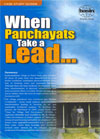
Publication Date: 2006
No. of pages: 6
Brief summary about document :
The Panchayat of any village can help in transforming the socio-economic and housing conditions of the village. One such Panchayat of Kuthambakkam village in collaboration with ‘Trust for Village Self Governance’ initiated the programme called Rural Housing and Habitat Programme. The main aim of the TVSG was to target the poor people of the village to improve their living conditions and provide them livelihood by encouraging them to provide labour. The programme laid the way for people-centered habitat process.
Documentation assistance for :Basin-South Asia
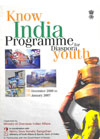
Publication Date:
No. of pages: 16
Brief summary about document :
The booklet contains the Programme Details of Know India Programme held from 19th December, 2006 to 9th Janaury, 2007 and country-wise list of students who attended the programme with the basic information like, DoB, E-mail, Educational Profile, Work experience and Passport No. The internship programme for Diaspora Youth is programme of Ministry of Overseas Indian affairs and aims at association of ypunger generation of Indian Diaspora with India. At the Natioanl level the programme is organized in coordination with Nehru Yuva Kendra sangathan.
Documentation assistance for : IRIS Publication Pvt. Ltd.

Publication Date:
No. of pages: 16
Brief summary about document :
The booklet is a tribute tour India’s great leader, Jawaharlal Nehru and compilation of memorable quotes by him and some of his rare photographs. It’s an effort to familarise the young generation with his vision to transform India into a great country.
Documentation assistance for : IRIS Publication Pvt. Ltd.